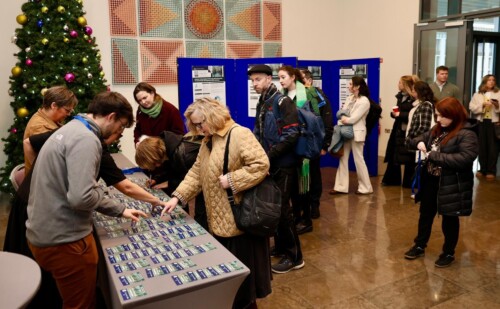New HEA Data provides in-depth insight into the socio-economic profile of our universities and institutes of technology
By Maura O'Shea
Posted: 7 December, 2020

Data covering 94% of all enrolments in 2018/2019 creates a socio-economic profile of Irish higher education students.
The Higher Education Authority (HEA) has today (Monday, December 7) published detailed data which offers an insight into the Spatial and Socio-Economic profile of the Higher Education Population.
The data is based on Deprivation Index Scores (DIS) which measure the relative affluence or disadvantage of a particular geographical area based on data compiled from the census. Using this information, the HEA has analysed the socio-economic profile of nearly all (94%) of the student population on an individual institutional level. Because of the quality of this data, it gives us an understanding of the student population that is second to none and it underpins the importance of addressing inclusion at all levels of education.
This is the second year that the HEA has collated this data and builds on the report published by the HEA last year. More importantly, it now includes all publicly funded higher education institutions (HEIs) for the first time.
Among the key findings include:
· In terms of ratios, there are 4.9 students from disadvantaged areas to every 10 students from affluent areas, but this varies across institutions.
· TCD has the highest proportion of students from affluent areas (36%) in its student body while TCD, UCD and RCSI (all at 5%) have the lowest proportion from disadvantaged areas. Letterkenny Institute of Technology has the highest proportion of students from disadvantaged areas (25%).
· 10% of all students are classed as ‘disadvantaged’ while 20% are classed as ‘affluent’, based on their home Census small area.
· Based on Electoral Division level area income profiles, the overall average household income of students, based on their home ED, in higher education is €49,603 and ranges from €35,853 in Letterkenny IT to €56,822 in IADT Dún Laoghaire.
· Male students have a higher DIS than female students (2.3 versus 1.9), which suggests lower enrolment rates from males in disadvantaged areas than from females in disadvantaged areas.
· In terms of fields or area of study, courses such as finance, banking and medicine have a high DIS (5.3 and 6), i.e. they have more affluent students. Just 4% of medical enrolments are from disadvantaged areas.
· Courses in the area of childcare have a lower DIS (-2.2) with 19% of students attending those courses coming from disadvantaged areas.
· TCD is included in this dataset for the first time this year. Its score of 5.7 means that it has the most affluent student population. 5% of its students are from disadvantaged areas.
HEA CEO Dr Alan Wall welcomed the publication of the comprehensive dataset and acknowledged that it signals more work to be done in the future. He also welcomed the prioritisation of inclusion by Minister for Higher and Further Education, Research, Innovation and Science, Simon Harris TD. Dr Wall said:
“The higher education student population does not yet reflect the diversity found in the rest of the population in Ireland. This detailed dataset provides policy makers and institutions with a comprehensive knowledge of patterns of access and disadvantage that will assist them in developing and implementing targeted approaches to advancing equity of access.”
Minister for Higher and Further Education, Research, Innovation and Science, Simon Harris TD, said:
“This is a really valuable and important piece of work. Since my appointment, I have made it clear that it is my ambition to ensure third level education is accessible to everyone, regardless of age, race, geography or gender.
“In order to achieve that aim, we must ensure that our policies strengthen the participation of students in higher education and to do that, we need accurate data and evidence.
“This is the second year of such data collection and I believe it will be an excellent resource to us as we prepare our new National Access Plan. I want to thank the Higher Education Authority for its work on this report.”
HEA’s Head of Access Policy, Caitríona Ryan said the compilation of such complex data is necessary for evidence-based policy making – both at national level and at individual HEI level.
But she added that it is not useful to compare HEIs with each other based on DIS, as context is very important.
“Each HEI serves a unique region and offers its own range of programmes with varying levels of student demands. We know that all HEIs have access infrastructures in place that are working at both the pre-entry and post-entry stages with all the national access target groups – students who are socio-economically disadvantaged, students from the Travelling community, students with disabilities and first-time mature students,” she said.
These access infrastructures are complemented by a range of programmes and initiatives to support students from disadvantaged backgrounds such as the SUSI grants scheme, Student Assistance Fund (SAF), Programme for Access to Higher Education (PATH), including the 1916 Bursary Fund, and recently announced COVID-19-related supports such as the ICT Grant for disadvantaged students.
Approximately €42 million within the HEA core funding was allocated to HEIs in 2020 on the basis of their access metrics. This supports HEIs to have an access infrastructure in place that provides for the pre-entry and post-entry work required to support students from target groups access and successfully participate in higher education.
The Higher Education Access Route (HEAR) Scheme also supports students who have a socio-economic disadvantage enter higher education on reduced
points. Latest data shows that of about 4,000 eligible HEAR applicants in 2019, there were just over 2,500 acceptances of a HEAR place.
The Disability Access Route to Education (DARE) is a third level alternative admissions scheme for school leavers whose disabilities have had a negative impact on their second level education. Latest data shows that of about 4,000 eligible DARE applicants in 2019, there were just over 2,600 acceptances of a DARE place.
During 2021, work will commence on the development of the next National Access Plan including new participation targets. DIS will have a key role to play here and will be vital over the lifetime of the Plan in demonstrating progress and setting our ambitions for the future.
Ends


